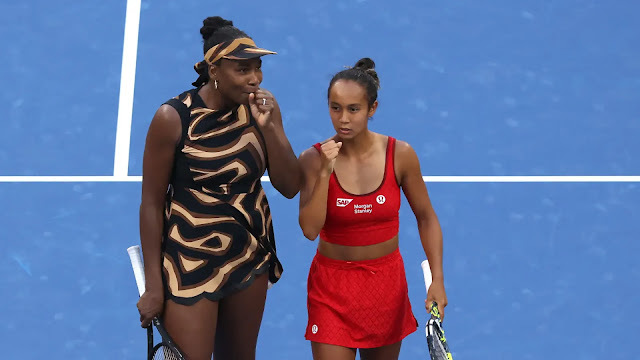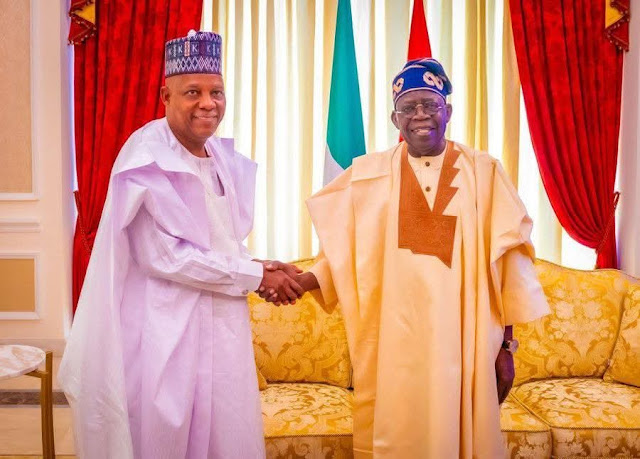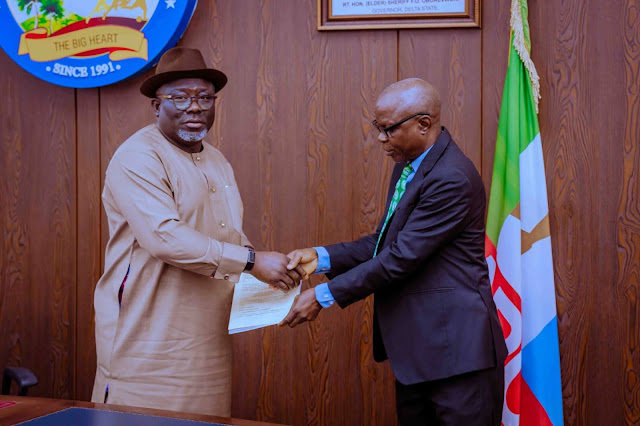On September 1, 2025, Venus Williams, the 45-year-old tennis legend, and her 22-year-old Canadian partner, Leylah Fernandez, delivered a commanding performance to reach the women’s doubles quarterfinals at the 2025 US Open. The unseeded duo defeated the 12th-seeded pair of Ekaterina Alexandrova and Zhang Shuai 6-3, 6-4 in a third-round match at Flushing Meadows, showcasing their chemistry and resilience. The victory, reported by SuperSport on September 2, 2025, marks a significant milestone for Williams, who reached the third round of a women’s doubles major for the first time since 2018, and for Fernandez, a former US Open singles finalist building her legacy.
This achievement is more than a sporting triumph; it represents the convergence of two generations of tennis excellence. Williams, a 14-time Grand Slam doubles champion, brings unparalleled experience, while Fernandez, the 2021 US Open singles runner-up, adds youthful energy and ambition. Their partnership, forged through a wild-card entry, has captured the imagination of fans and sparked discussions about the state of women’s doubles, the evolution of tennis, and the enduring impact of icons like Williams. This article delves into the details of their US Open campaign, explores its significance for both players, and situates the event within the broader context of tennis’s socio-cultural and economic dynamics. It offers a critical analysis of the sport’s challenges and opportunities, proposing policy recommendations to advance women’s doubles and ensure its sustainability.
Details of the US Open Doubles Victory
The third-round match on September 1, 2025, saw Williams and Fernandez dominate Alexandrova and Zhang with a blend of strategic play and athletic prowess. Played on Court 12 at the USTA Billie Jean King National Tennis Center, the match lasted 1 hour and 22 minutes, with the pair breaking serve three times and saving five of seven break points against them. Williams’s powerful groundstrokes and net play complemented Fernandez’s speed and precision, allowing them to control key moments. Their 6-3, 6-4 victory followed earlier upsets, including a first-round win over the reigning champions, Lyudmyla Kichenok and Ellen Perez, and a second-round triumph over Ulrikke Eikeri and Eri Hozumi (7-6(1), 6-1).
Venus Williams, competing in her first US Open doubles event since 2018, expressed pride in the partnership, noting, “Leylah brings so much energy, and it’s been a joy to play with her. We’re just focused on enjoying the moment and playing our best.” Fernandez, in her first major doubles run, praised Williams’s mentorship, stating, “Venus is a legend, and learning from her on and off the court is incredible. We’re fighting for every point.” Their chemistry, evident in their synchronized play and celebratory twirls, has resonated with fans, as seen in X posts like, “Venus and Leylah are the duo we didn’t know we needed—pure magic!”
The quarterfinal berth sets up a challenging match against either the top-seeded pair of Hsieh Su-wei and Elise Mertens or the 16th-seeded team of Marie Bouzkova and Sara Sorribes Tormo. Williams and Fernandez’s run, as an unseeded wild-card team, underscores their underdog status and the unpredictability of doubles tennis, where experience and teamwork can trump seeding.
Background: Venus Williams and Leylah Fernandez
Venus Williams: Born on June 17, 1980, in Lynwood, California, Venus Williams is a tennis icon whose 27-year professional career includes seven Grand Slam singles titles, 14 doubles titles (all with sister Serena), and four Olympic medals. Her last major doubles title came at Wimbledon 2016, and her most recent singles appearance at the US Open 2025 ended in a first-round loss. At 45, Williams defies age stereotypes, leveraging her experience and physicality to compete at an elite level. Her decision to focus on doubles, accepting a wild-card entry with Fernandez, reflects her desire to extend her career and mentor younger players.
Williams’s legacy extends beyond the court. As a pioneer for gender and racial equality in tennis, she advocated for equal prize money at Wimbledon and challenged systemic barriers as a Black athlete. Her partnership with Fernandez, a Canadian of Filipino-Ecuadorian descent, symbolizes the sport’s growing diversity.
Leylah Fernandez: Born on September 6, 2002, in Montreal, Canada, Fernandez burst onto the scene with her 2021 US Open singles final run, defeating top players like Naomi Osaka and Aryna Sabalenka before losing to Emma Raducanu. Ranked as high as No. 13 in singles, Fernandez has focused primarily on singles but has shown promise in doubles, reaching the 2023 French Open doubles final with Taylor Townsend. Her partnership with Williams, announced on August 26, 2025, via a US Open wild-card entry, marks a significant step in her doubles career.
Fernandez’s aggressive baseline play and quick footwork complement Williams’s veteran savvy, creating a formidable duo. Her admiration for Williams, expressed in post-match interviews, highlights the mentorship dynamic, with Fernandez noting, “Venus’s experience is like a masterclass every match.”
Strategic Motivations for Their Partnership
The Williams-Fernandez partnership is driven by strategic and personal motivations:
Williams’s Career Extension: At 45, Williams uses doubles to remain competitive, leveraging her experience in a less physically demanding format than singles. Her success with Fernandez could prolong her career, potentially targeting a 15th doubles major.
Fernandez’s Development: Partnering with Williams offers Fernandez invaluable experience, enhancing her doubles skills and visibility. A deep US Open run could boost her ranking and marketability.
Wild-Card Opportunity: The US Open’s decision to grant a wild-card entry reflects confidence in their potential to draw crowds and upset higher seeds, capitalizing on Williams’s star power and Fernandez’s rising profile.
Mentorship and Legacy: Williams’s role as a mentor aligns with her advocacy for nurturing young talent, while Fernandez’s youth injects energy into the partnership, creating a symbiotic dynamic.
Inspiration for Fans: Their cross-generational, multicultural pairing resonates with diverse audiences, as seen in X posts celebrating their “inspirational teamwork.”
Significance of the Quarterfinal Run
The Williams-Fernandez quarterfinal berth has multiple layers of significance:
Venus Williams’s Longevity: At 45, Williams’s ability to compete at a Grand Slam level defies ageism in sports, inspiring older athletes and challenging stereotypes about career longevity. Her third-round doubles achievement, the first since 2018, underscores her enduring competitiveness.
Fernandez’s Emergence: For Fernandez, the run enhances her reputation as a versatile player, building on her 2021 singles success and positioning her as a future doubles contender.
Doubles Spotlight: Women’s doubles often receives less attention than singles, but Williams and Fernandez’s success highlights the format’s excitement and strategic depth, drawing new fans.
Cultural Impact: Their partnership, bridging generational and cultural divides, promotes diversity and inclusion in tennis, resonating with global audiences.
Inspiration for Underdogs: As an unseeded wild-card team, their upsets over seeded pairs like Kichenok/Perez and Alexandrova/Zhang inspire underdog narratives, as seen in X posts calling them “the people’s champs.”
Historical Context: Women’s Doubles and the US Open
The US Open has a rich history of women’s doubles, with iconic pairs like Martina Navratilova/Pam Shriver and the Williams sisters dominating the event. Venus and Serena won the US Open doubles title in 1999 and 2009, part of their 14-major haul together. Venus’s return to doubles in 2025, after a six-year absence, evokes her storied past, including her iconic twirl celebration, which she reprised with Fernandez to delight fans.
Women’s doubles has evolved significantly, with increased prize money and media coverage, though it still lags behind singles in visibility. The 2025 US Open offers $750,000 to the winning doubles team, compared to $3.6 million for singles champions, highlighting the disparity. Williams’s participation elevates the format’s profile, as her star power draws attention to the strategic nuances of doubles play.
Fernandez’s emergence reflects a new generation of players embracing doubles to complement their singles careers. Players like Coco Gauff and Barbora Krejcikova have also excelled in both formats, signaling a trend toward versatility. The Williams-Fernandez partnership, blending experience and youth, mirrors historical pairings like Navratilova/Shriver, who combined veteran savvy with emerging talent.
Socio-Cultural Context: Tennis’s Evolution
The Williams-Fernandez run must be viewed within tennis’s socio-cultural dynamics:
Diversity and Inclusion: Williams, a Black American, and Fernandez, of Filipino-Ecuadorian descent, represent the sport’s growing diversity. Their success challenges historical underrepresentation, inspiring marginalized communities.
Ageism in Sports: Williams’s performance at 45 defies stereotypes about aging athletes, particularly women, who face pressure to retire earlier than men. Her longevity aligns with campaigns like Billie Jean King’s advocacy for gender equality.
Women’s Doubles Visibility: The format’s lower media coverage and prize money reflect broader gender disparities in sports. Williams’s participation could drive calls for equity, as seen in X posts urging “more love for doubles.”
Global Fan Engagement: The US Open’s global reach, amplified by social media, makes Williams and Fernandez’s run a cultural moment, with X posts celebrating their “cross-generational vibe.”
Mentorship in Sports: Williams’s role as a mentor to Fernandez highlights the importance of veteran guidance, a trend seen with players like Novak Djokovic mentoring Carlos Alcaraz.
Economic Context: Tennis’s Financial Landscape
The economic dynamics of tennis provide further context:
Prize Money Disparities: The US Open’s $75 million total purse in 2025 is the largest in tennis, but doubles players earn significantly less than singles players, limiting financial incentives. Williams and Fernandez’s run could push for increased doubles funding.
Sponsorship and Marketability: Williams’s global brand and Fernandez’s rising star status attract sponsors, boosting their earning potential. Their success could draw investment to doubles events.
Tournament Revenue: The US Open generates over $500 million annually through ticket sales, broadcasting, and sponsorships. High-profile players like Williams drive attendance, benefiting the local economy.
Player Longevity: Williams’s ability to compete at 45 highlights the economic benefits of extended careers, allowing players to maximize earnings through endorsements and prize money.
Global Reach: The US Open’s broadcast on platforms like ESPN and Tennis TV reaches millions, amplifying the economic impact of players like Williams and Fernandez.
Challenges for Williams and Fernandez
For Venus Williams:
Physical Demands: At 45, managing physical strain is critical, particularly in a grueling tournament like the US Open.
Public Expectations: Fans and media expect Williams to perform at her peak, adding pressure to maintain her legacy.
Balancing Roles: Mentoring Fernandez while competing requires emotional and strategic balance.
For Leylah Fernandez:
Learning Curve: Adapting to doubles’ unique demands, such as net play and teamwork, is a challenge despite her singles success.
Pressure of Partnership: Playing alongside a legend like Williams brings scrutiny, as seen in X posts praising her but noting the “big shoes to fill.”
Balancing Singles and Doubles: Fernandez’s singles commitments, including a third-round loss in 2025, require careful scheduling to avoid burnout.
For Women’s Doubles:
Visibility Gap: Doubles struggles for media attention compared to singles, limiting fan engagement and sponsorships.
Prize Money Disparity: Lower financial rewards discourage top players from prioritizing doubles, threatening the format’s growth.
Player Participation: Attracting singles stars to doubles events is challenging, as many prioritize individual rankings.
Opportunities for Williams and Fernandez
For Venus Williams:
Legacy Enhancement: A deep US Open run could add to her 14 doubles majors, solidifying her status as a tennis icon.
Mentorship Role: Guiding Fernandez enhances Williams’s influence as a role model, inspiring future generations.
Advocacy Platform: Success in doubles provides a platform to advocate for equality and diversity in tennis.
For Leylah Fernandez:
Career Growth: A strong doubles performance boosts her ranking, marketability, and versatility, positioning her as a multi-format star.
Learning Opportunity: Williams’s mentorship offers tactical and mental insights, enhancing Fernandez’s overall game.
Global Exposure: Playing with Williams increases Fernandez’s visibility, attracting sponsors and fans globally.
For Women’s Doubles:
Increased Visibility: Williams’s star power draws attention to doubles, potentially boosting viewership and sponsorships.
Inspiration for Players: Their success encourages other singles players to compete in doubles, enriching the format.
Fan Engagement: Their charismatic partnership, highlighted on X, can attract new fans to doubles events.
Policy Recommendations
To capitalize on the Williams-Fernandez run and advance women’s doubles, the following recommendations are proposed:
Increase Prize Money Equity: Grand Slams should allocate a higher percentage of prize money to doubles, narrowing the gap with singles to incentivize participation.
Enhance Media Coverage: Broadcasters like ESPN should dedicate more airtime to doubles matches, showcasing stars like Williams to boost viewership.
Promote Cross-Generational Pairings: Tournaments should encourage partnerships like Williams-Fernandez through wild-card entries and marketing campaigns.
Invest in Doubles Development: The WTA should fund doubles-specific training programs to develop specialists and encourage singles players to compete.
Fan Engagement Strategies: Use platforms like X to promote doubles stars and highlight their stories, as seen with Williams and Fernandez’s viral moments.
Support Veteran Players: Create policies to support aging athletes, such as flexible scheduling and recovery resources, to enable careers like Williams’s.
Diversity Initiatives: Promote inclusivity through outreach programs targeting underrepresented communities, inspired by Williams and Fernandez’s diverse backgrounds.
Broader Implications for Tennis
The Williams-Fernandez run has far-reaching implications:
Doubles Renaissance: Their success could spark renewed interest in women’s doubles, encouraging investment and participation.
Inspiration for Diversity: Their multicultural partnership promotes inclusivity, addressing tennis’s historical lack of diversity.
Challenging Ageism: Williams’s performance at 45 redefines career longevity, inspiring athletes across sports.
Fan Engagement: Social media’s role in amplifying their run, as seen on X, underscores the power of digital platforms in growing tennis’s reach.
Economic Growth: High-profile runs like theirs drive tournament revenue, benefiting local economies and the global tennis ecosystem.
Looking Ahead: A Legacy in the Making
Venus Williams and Leylah Fernandez’s journey to the 2025 US Open doubles quarterfinals is a testament to the power of experience, youth, and teamwork. For Williams, it’s a chance to extend her storied career, defying age and inspiring millions. For Fernandez, it’s a platform to build her legacy, learning from a legend while showcasing her talent. Their partnership, born of a wild-card entry, has captivated fans and highlighted the untapped potential of women’s doubles.
As they face formidable opponents in the quarterfinals, their run symbolizes resilience, diversity, and the enduring appeal of tennis. By addressing the challenges facing doubles—visibility, prize money, and participation—tennis authorities can capitalize on this moment to elevate the format. Williams and Fernandez’s story, blending legacy and emergence, is a beacon for the sport’s future, inspiring players, fans, and policymakers to champion inclusivity, equity, and excellence.






